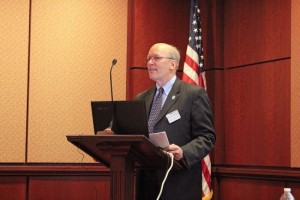Urban Streams Face Many Challenges but Rehabilitation Still Helpful
Urban Streams Face Many Challenges but Rehabilitation Still Helpful For Immediate Release Contact: Beth Beard 22 January 2014 [email protected] 301-897-8616 x215 City life is hard
American Fisheries Society Family of Websites:
Read our five journals and Fisheries magazine
Find thousands of unpublished agency reports and other information
Join us in Honolulu in 2024
Find an AFS Unit near you or in your area of specialty
Learn how to communicate the effects of climate change on fisheries
Summer internships for high school students
Explore our initiatives to increase diversity in the Society and in the fisheries profession
Find fisheries science products and services
Quick answers to common questions
Urban Streams Face Many Challenges but Rehabilitation Still Helpful For Immediate Release Contact: Beth Beard 22 January 2014 [email protected] 301-897-8616 x215 City life is hard
Imperiled Freshwater Organisms of North America Website For Immediate Release: January 29, 2014 Contact: Beth Beard, 301-897-8616 x215 [email protected] The American Fisheries Society (AFS) and


For Immediate Release: January 30, 2014 The American Fisheries Society (AFS) is pleased to welcome Tom Bigford as our new Policy Director starting on February

